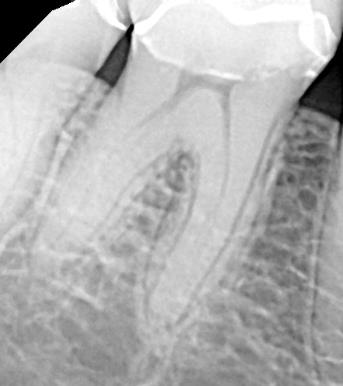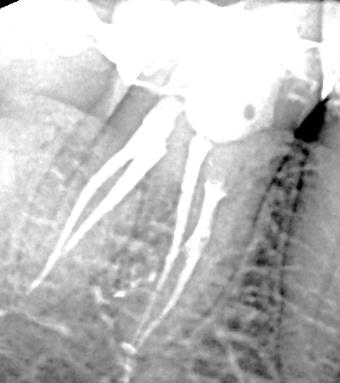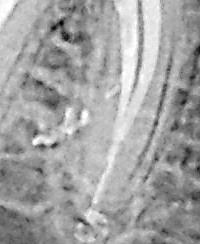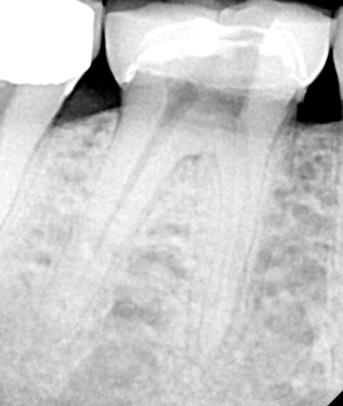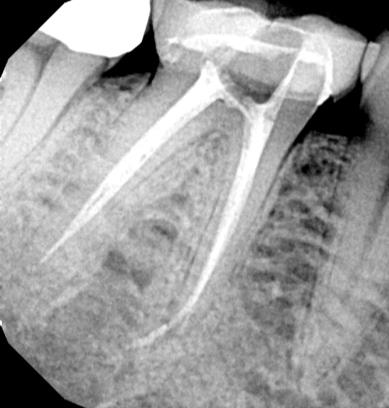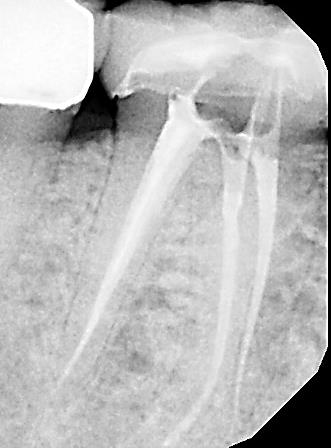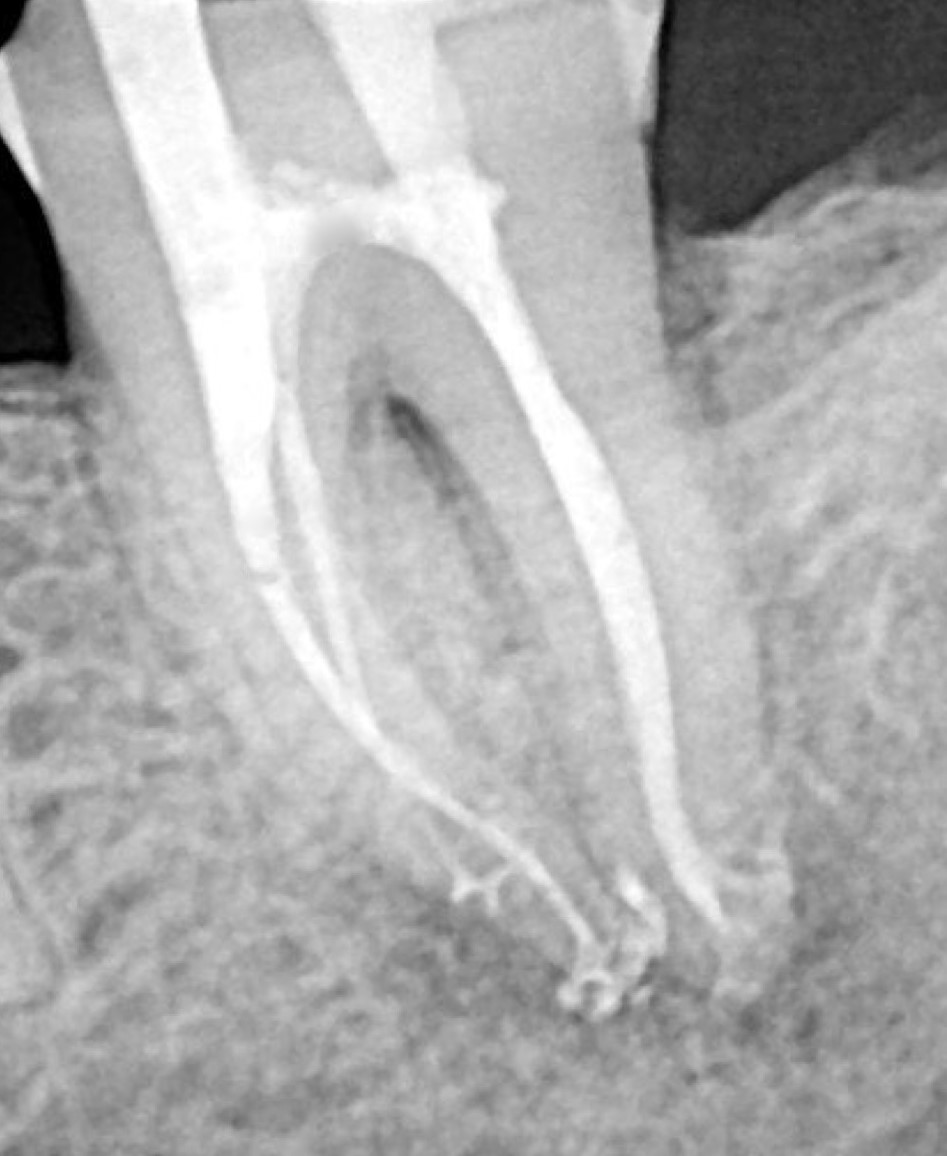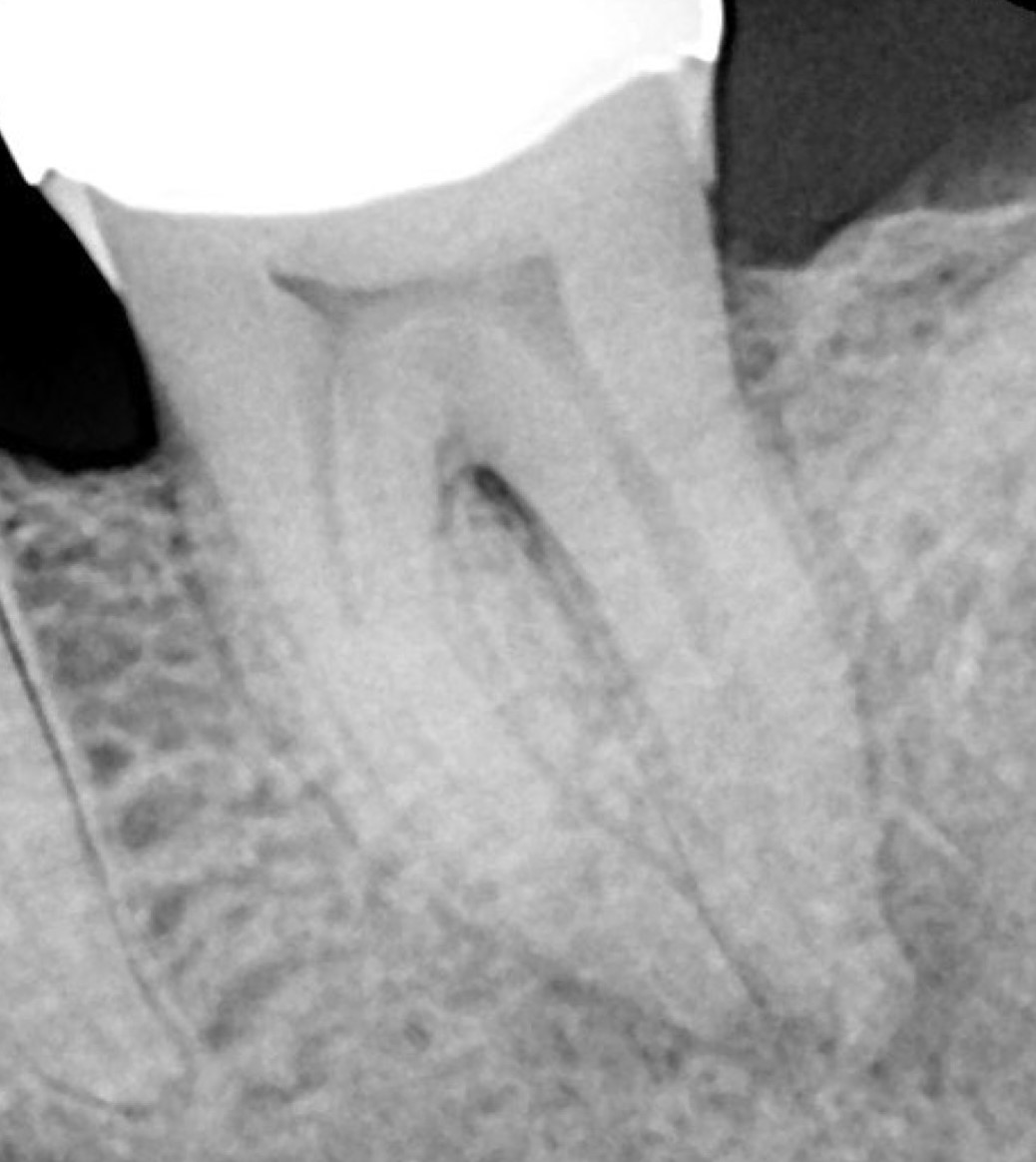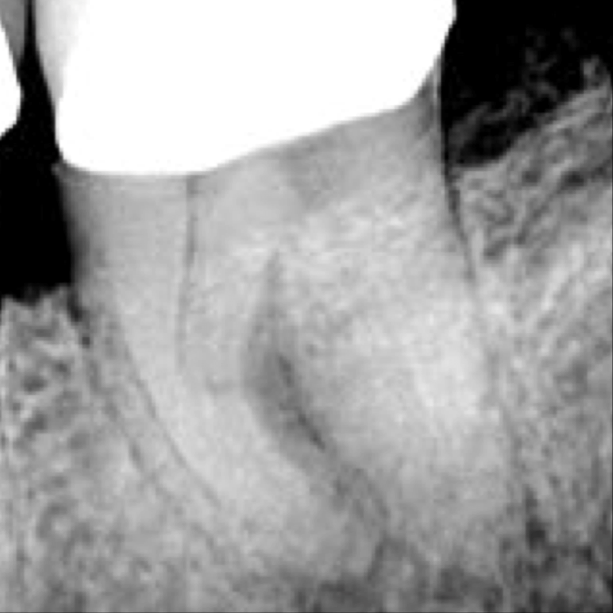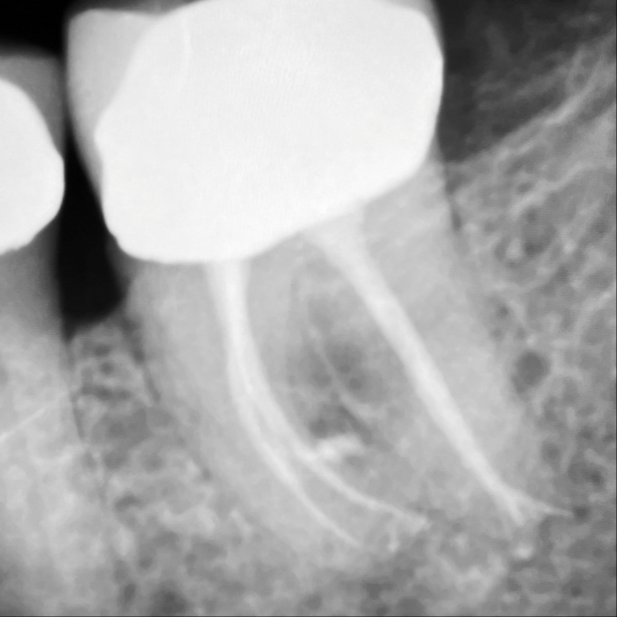CASE 1:
Interesting Anatomy—4 primary canals and a fifth mid-mesial canal with its own portal of exit. All four canals were instrumented with a single file: miniKUT EZP 15/.03. The access cavity was cleaned and etched with air abrasion, then bioceramic putty was placed over the orifices and pulp chamber floor for an impervious seal, then opaque dual-cure composite was placed as build-up with the final layer being omni-chromic composite.
Case 2:
Typical MIE treatment plan. miniKUT 15/.03 was the only file used in the mesial canals, a miniKUT 25/.05 was used in the distal canals that confluent apically.
Case: 3
Interesting anatomy treated with MIE. A slotted access entry was cut for the mesial canals and a 1.5mm round opening for the distal canal, leaving a pulp chamber “truss” between them . The mesial canals were negotiated with a 15-.03 miniKUT EZP rotary negotiating file (with lube in the PC) as first file to length, both canals gauged @ a #15 KF (w 17% EDTA), finishing instrumentation for the case as no dentin was cut in the distal canal; the pulp there was broached intact and a prebent #15 KF patency file was used after to explore 3 apical POE’s beyond the D apical impediment. PulpSucker negative pressure irrigation was staged, catheterized, and I ran 100ml 8% NaOCl w surfactants through the tooth in about 12 mins. I used Vista Dental’s new Regen bio ceramic sealer with miniKUT 15-.03 GP cones fit in the mesial canals (short CW downpacks and single cone backfills), and the same sealer with a plastic core obturator to fill the distal canal due to the apical impediment. Impediments that are difficult/impossible to fit a cone around are best filled-IMO-with carrier-based obturation. One does not even need to measure them, just coat and blot the canal with sealer, take the carrier out of the oven and slam it against the impediment. Air abrasion was used to clean the access openings after which dual cure composite was used to close things up. I called the patient that night and was informed that the pt. hadn’t needed to take the Aleve we dispensed
CASE 4:
Pre-op radiograph showing tooth #18 with a peri-radicular lesion encompassing both root apices and the furcation. The mesial canals were instrumented entirely with the miniKUT EZP 15/.03 and the distal canals were initially negotiated with miniKUT EZP 15/.03 and finished with miniKUT 25/.05.


